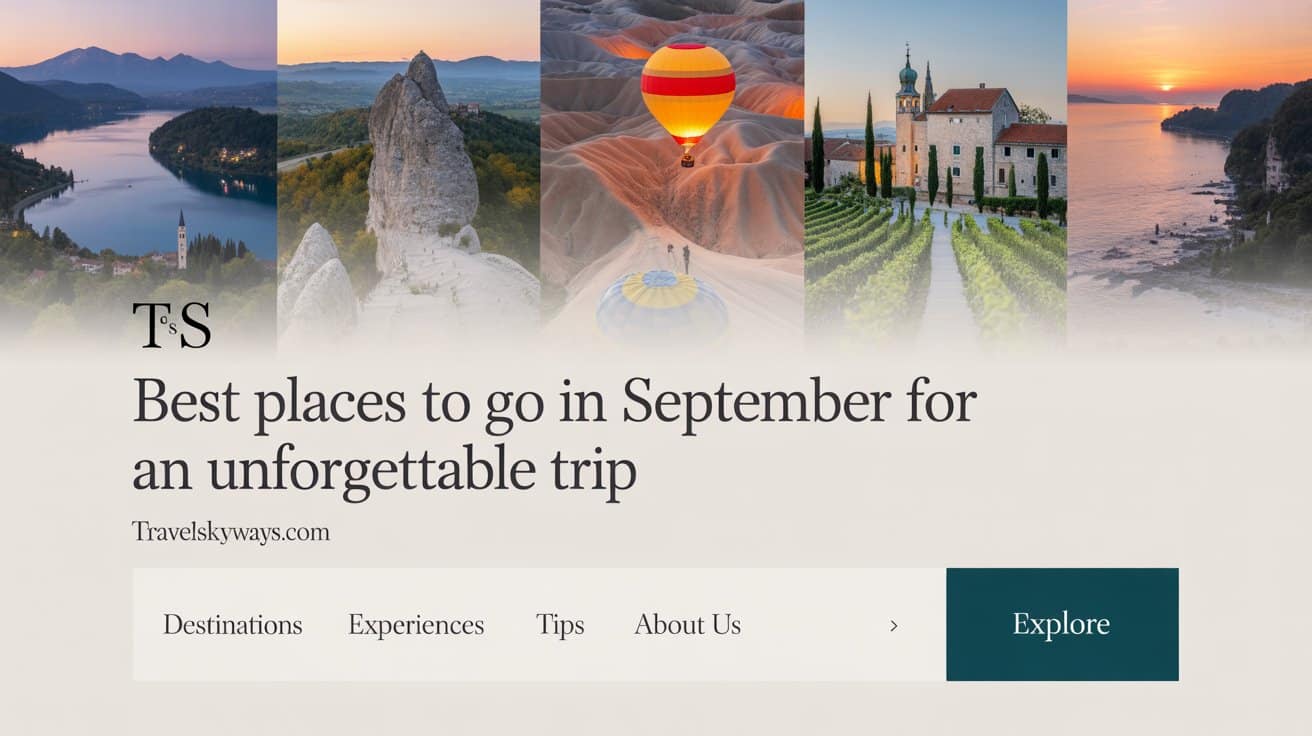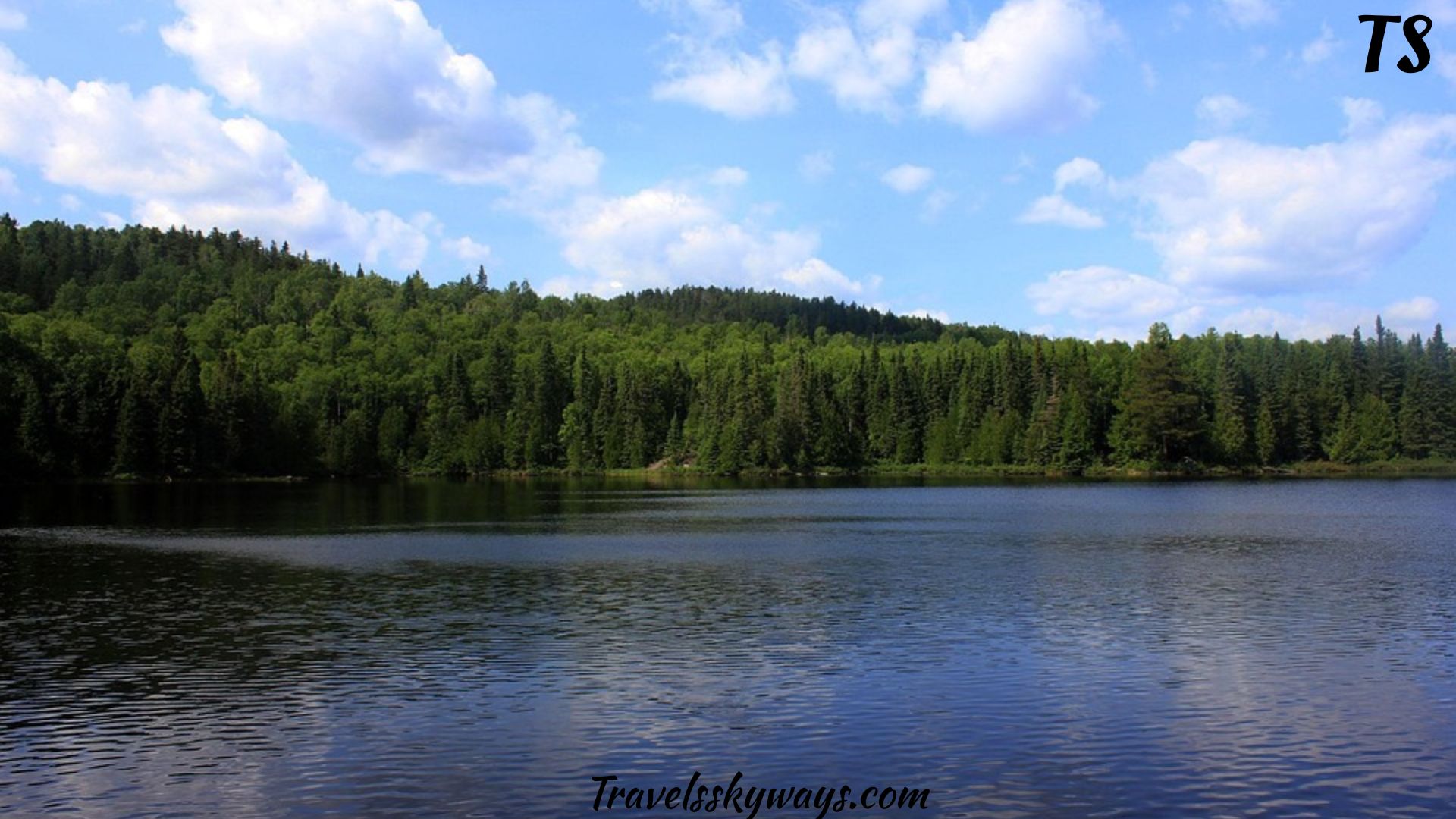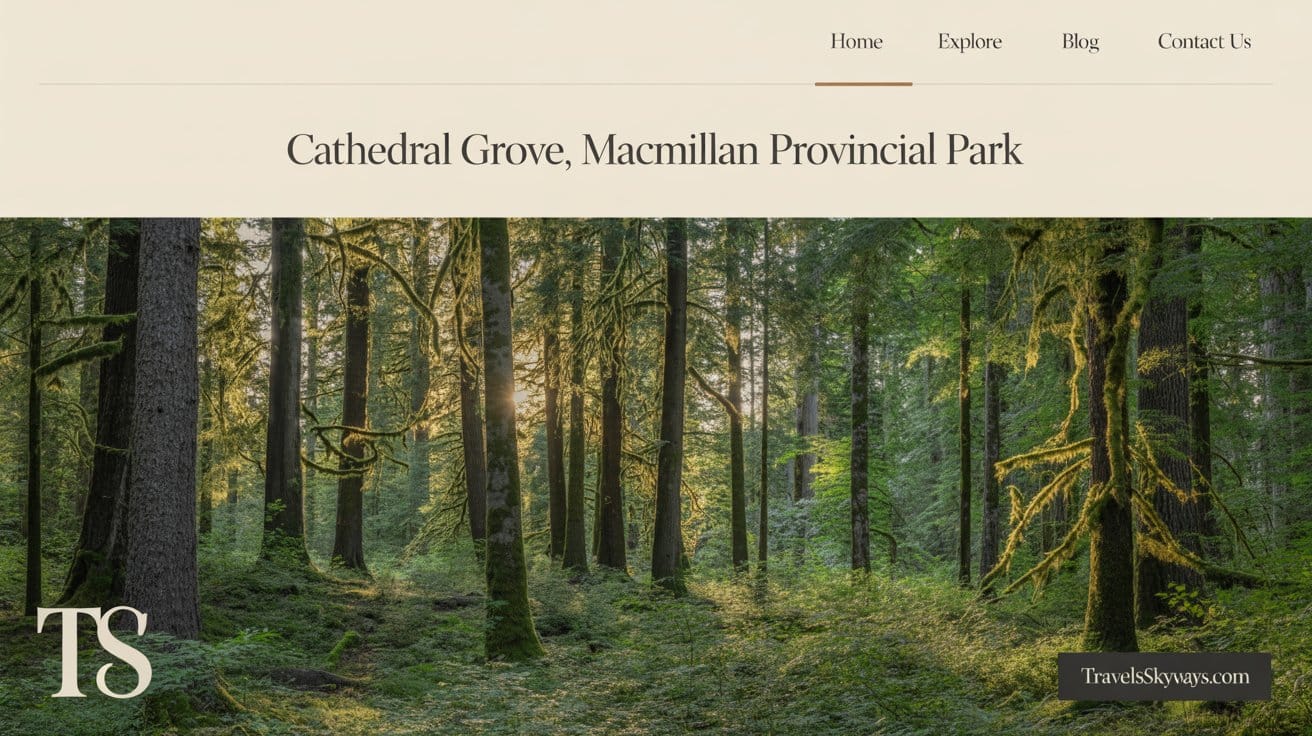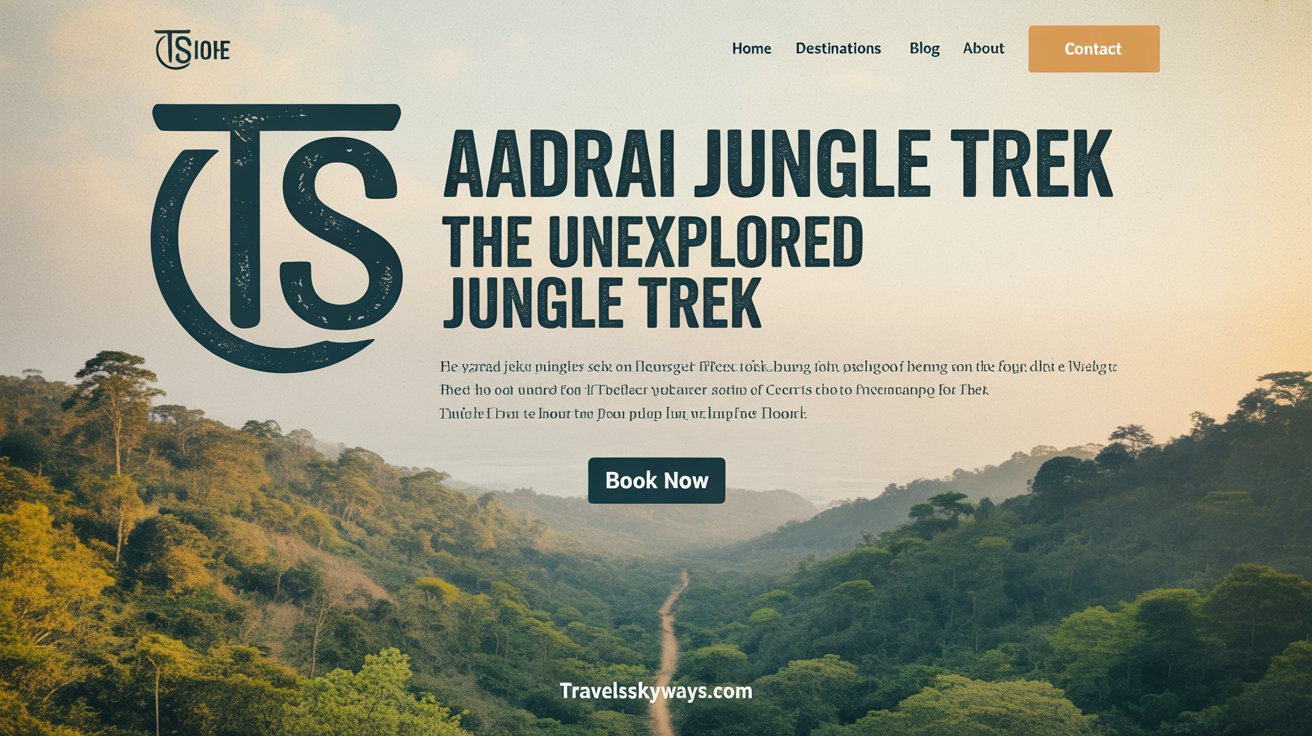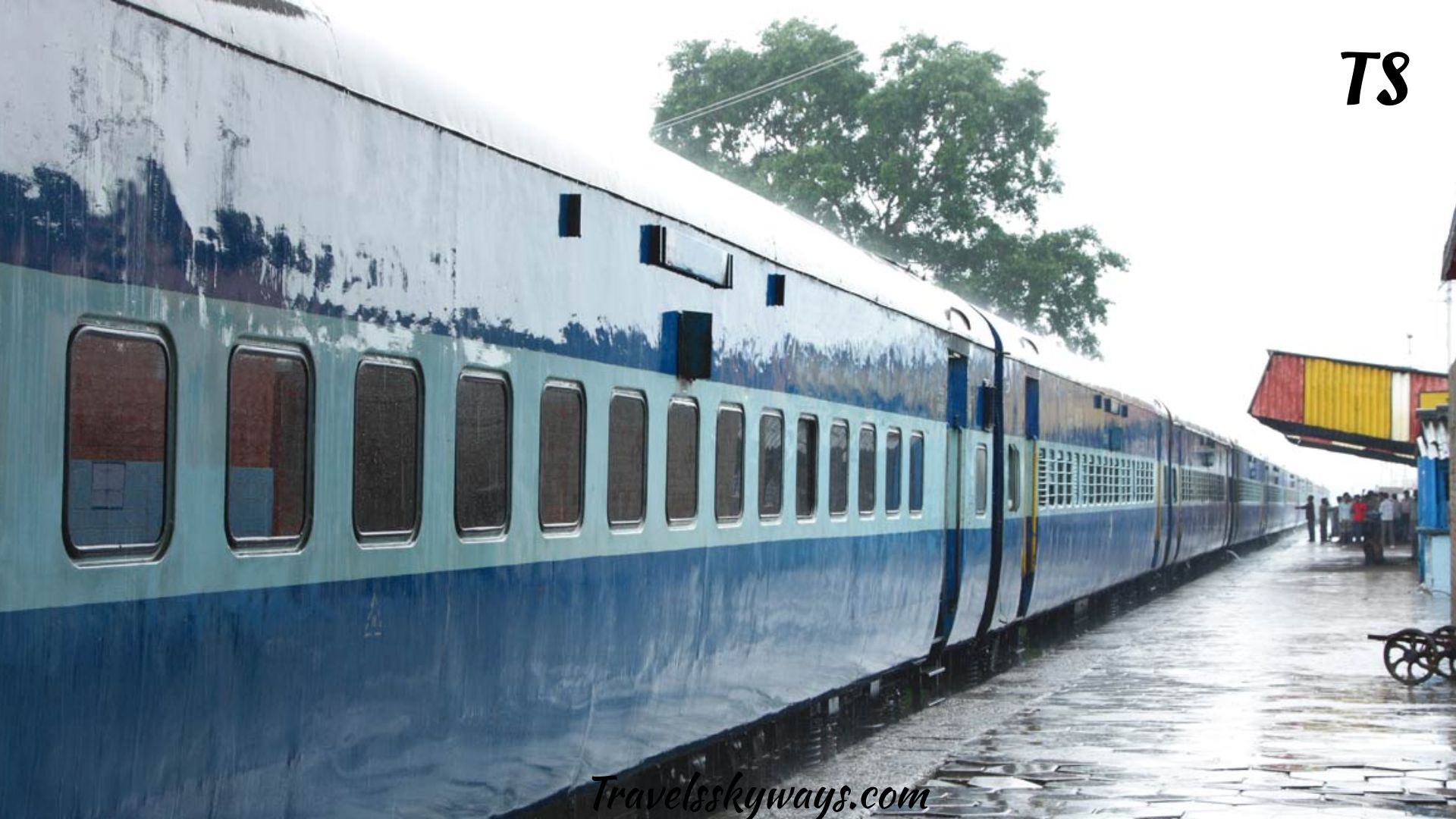
Aren’t you curious about taking a train journey from Delhi to Ladakh? It is indeed an adventure that is full of magic since it passes through one of the most beautiful places in India.
Nevertheless, there is no railway line going to Ladakh but still, the mix of train and road travel will be delightful. Your trip will carry you from the lively Delhi to the serene Leh together with the huge mountains, various cultures, and even unseen places.
This guide helps you to find the most fun ways, gives you tips, and provides daily schedules to make sure your travel is hassle-free, hence your trip from Delhi to Ladakh will be wholly free of inconveniences and very pleasant.
How to Plan Your Delhi to Ladakh Train Journey
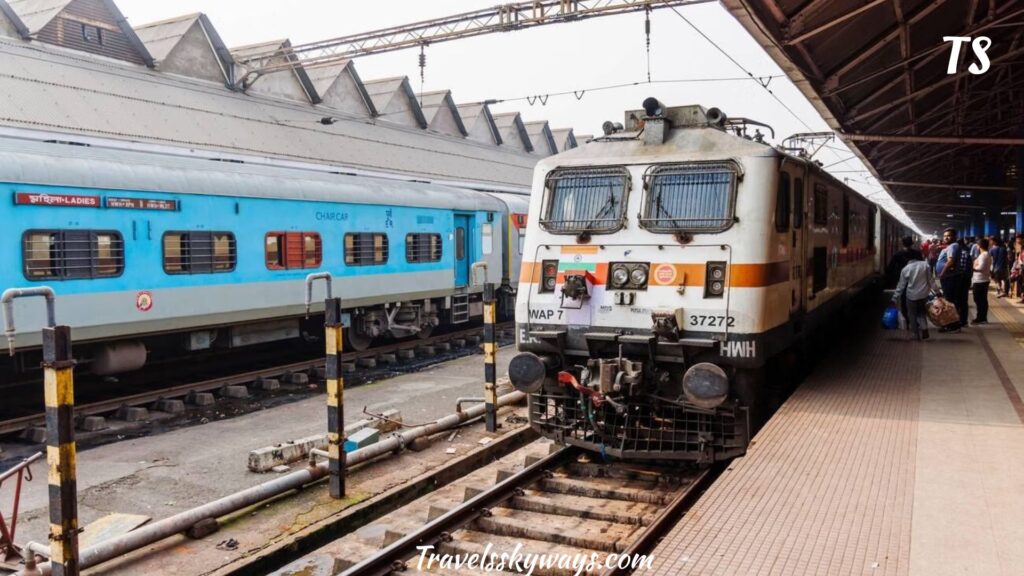
Dreaming of visiting Ladakh by train from Delhi? It’s an adventure worth planning—but there’s a catch. While no train goes straight to Ladakh, you can still create an unforgettable rail-and-road journey with stunning views, high-altitude passes, and plenty of culture along the way.
Is There a Direct Train from Delhi to Ladakh?
As of 2025, there is no direct train from Delhi to Ladakh (Leh). The extreme altitude and rugged Himalayan terrain make railway construction in this region difficult, though a proposed rail line is in the works. For now, travelers must combine train travel with road transport to complete the journey.
Here’s a breakdown:
| Route Segment | Travel Mode | Travel Time | Notes |
| Delhi → Jammu or Udhampur | Train | 8–12 hours | Multiple daily options available |
| Jammu/Udhampur → Leh | Road | 15–18 hours (or more) | Via Srinagar or Manali; very scenic |
Must Read: Complete Travel Guide to Chile: Best Tours, Places to Visit, Things to Do & Tips
The Best Routes for a Train Journey to Ladakh
Even without a direct train, you’ve got two great options to reach Ladakh while enjoying the comfort and affordability of Indian Railways.
1. Train to Jammu → Road to Ladakh
- Step 1: Take a train from Delhi to Jammu Tawi or Udhampur.
- Step 2: From there, travel by shared taxi, private car, or bus to Leh.
- Best for: Budget travelers, group tours, and those seeking a balance of comfort and adventure.
2. Full Road Trip with Train Start
- Step 1: Use the train to reach a northern base like Chandigarh or Jammu.
- Step 2: Embark on a legendary road trip via Manali or Srinagar to Leh.
- Best for: Adventure seekers, bikers, photographers, and offbeat explorers.
Fast Facts About Delhi to Ladakh Travel
- Direct train: Not available as of 2025.
- Leh altitude: Around 11,500 ft (3,500 meters)—acclimatize gradually.
- Best travel window: June to September, when roads are open and weather is stable.
- Ongoing project: A Delhi-Leh railway line is being planned, expected to be among the highest railway lines in the world once completed.
Checklist: How to Prepare for Your Journey
- ✅ Book train tickets early (especially during peak summer).
- ✅ Reserve road transport from Jammu or Manali in advance.
- ✅ Pack for altitude: Think layers, gloves, lip balm, and sunscreen.
- ✅ Get Inner Line Permits (ILP) if visiting Nubra Valley, Pangong Lake, or Tso Moriri.
- ✅ Carry medications for altitude sickness (consult a doctor before use).
- ✅ Download offline maps; mobile signals can be patchy in high mountains.
Key Highlights Along the Way
- Jawahar Tunnel: The gateway to Kashmir from Jammu.
- Zoji La Pass: One of the highest and most thrilling passes.
- Kargil: A meaningful stop en route to Leh with historic significance.
- Lamayuru Monastery: A surreal, moon-like landscape worth stopping for.
“It’s not the destination, it’s the journey”—and the journey from Delhi to Ladakh by train and road is proof of that.
While you can’t board a single train from Delhi to Ladakh just yet, you can craft a journey that’s rich in culture, adventure, and breathtaking scenery. By mixing rail travel with mountain roads, you’ll experience parts of India many travelers never do.
Delhi to Ladakh by Train – Major Stops & Route Breakdown
While there’s no direct train to Ladakh, planning your journey with key rail and road segments makes the adventure both exciting and manageable. Here’s a detailed breakdown of the major stops along the Delhi to Ladakh train journey, including useful travel tips, distances, and must-see highlights.
Delhi to Jammu – First Stop of Delhi to Ladakh by Train
Your journey begins in the capital. From New Delhi Railway Station, hop aboard a train heading to Jammu Tawi, a major railhead in Jammu & Kashmir.
| Train Name | Travel Time | Frequency |
| Shalimar Express (14645) | ~12 hours | Daily |
| Jammu Rajdhani Express (12425) | ~9 hours | 4x per week |
| Jammu Mail (14033) | ~13 hours | Daily |
Pro tip: Choose a night train to save on hotel costs and arrive refreshed.
Udhampur – Second Stop of Delhi to Ladakh by Train
If you’re skipping Jammu, Udhampur is another great option. Located just 55 km from Jammu, Udhampur Railway Station is quieter and often less crowded.
- Ideal for: Bikers, solo travelers, or anyone planning a road trip via Patnitop.
- Best route onward: Udhampur → Patnitop → Srinagar → Leh.
Note: Udhampur offers stunning mountain views as you begin your ascent into the Himalayas.
Katra – A Pilgrimage Stop of Delhi to Ladakh by Train
Before heading to Ladakh, many travelers detour to Katra, home of the famous Vaishno Devi Temple.
- Distance from Jammu: ~50 km
- Recommended stay: 1 night if you’re planning to trek to the shrine
- Pilgrimage bonus: Rejuvenate spiritually before diving into the high-altitude thrill of Ladakh
Train Tip: Several trains now run directly from Delhi to Katra, including the Shri Shakti Express.
Must Read: Rishikesh for the Solo Queen: A Trip You’ll Never Forget
Onward Journey – From Jammu to Srinagar and Ladakh
Once you’re done with the train segment, it’s time to switch to wheels. The real Himalayan adventure starts here.
🚗 Jammu to Srinagar or Leh by Road
This leg can be done in stages or all at once, depending on time and weather.
| Route | Distance | Time (approx.) | Notes |
| Jammu → Srinagar | 270 km | 7–9 hours | Through the scenic Banihal tunnel |
| Srinagar → Kargil → Leh | 420 km | 2 days | Overnight stop in Kargil advised |
| Jammu → Leh (nonstop) | 670+ km | 18–20 hours | Only for seasoned road trippers |
Travel months: June to early October (when passes like Zoji La are open)
The Mesmerizing Srinagar Valley – A Beautiful Stop of Delhi to Ladakh by Train
You must not skip Srinagar. Whether it’s the Dal Lake houseboats, Shikara rides, or lush Mughal gardens, this valley adds a soft, romantic pause to your rugged journey.
Things to Do in Srinagar:
- Stay in a traditional houseboat on Dal Lake
- Visit Shankaracharya Temple for panoramic views
- Explore Tulip Garden if you’re visiting in spring
- Try local cuisine: Rogan Josh, Kahwa, and Gushtaba
Stay Duration: 1–2 days for full experience.
Leh – Final Destination of Delhi to Ladakh by Train
You’ve made it! Leh, the capital of Ladakh, greets you with crisp air, prayer flags, and epic landscapes.
Quick Facts about Leh (2025):
| Detail | Info |
| Elevation | 11,562 ft (3,524 m) |
| Oxygen level | 60–70% of sea level |
| Best travel months | June to September |
| Permits required | Yes (for Nubra, Pangong) |
| Must-visit spots | Pangong Lake, Nubra Valley, Magnetic Hill, Thiksey Monastery |
Important: Acclimatize for 24–48 hours upon arrival. Don’t rush into treks or high-pass drives right away.
Summary – Route at a Glance
| Segment | Mode | Highlights |
| Delhi → Jammu | Train | Comfortable overnight journey |
| Jammu → Srinagar | Road | Banihal tunnel, scenic highway |
| Srinagar → Leh | Road | Zoji La Pass, Kargil |
| Optional stops | Udhampur, Katra | Pilgrimage and hill stations |
Although Delhi to Ladakh by train isn’t a one-ticket ride, the blend of rail convenience, roadside beauty, and Himalayan magic makes this an adventure worth every mile. With the right planning, you’ll experience spiritual calm, natural wonder, and cultural richness—all on a single trip.
Key Stopovers and Scenic Experiences Along the Way
The Delhi to Ladakh journey isn’t just about getting from point A to B—it’s a visual and cultural expedition through some of the most awe-inspiring regions of northern India. From Mughal-era marvels to snow-capped Himalayan giants, every stretch offers something unforgettable.
Here’s a breakdown of the key stopovers and what makes each unique:
| Location | Highlight | Experience Type |
| Jammu | Raghunath Temple, Bahu Fort | Spiritual & historical |
| Udhampur | Patnitop hill station, Chenani-Nashri Tunnel | Nature & adventure |
| Katra | Vaishno Devi Temple | Religious pilgrimage |
| Srinagar | Dal Lake, Shikara rides, Mughal Gardens | Culture & scenery |
| Sonamarg | Thajiwas Glacier, river views | Natural beauty |
| Kargil | War Memorial, Monasteries | History & emotion |
| Leh | Pangong Lake, Thiksey Monastery, Shanti Stupa | Spiritual & breathtaking |
Must-See Attractions Along the Delhi to Ladakh by Train Route
Here’s a handpicked list of must-visit sites along the journey—some iconic, others hidden gems worth detouring for.
📍 In Jammu & Udhampur
- Bahu Fort: One of the oldest structures in Jammu, offering panoramic views over the Tawi River.
- Chenani-Nashri Tunnel: India’s longest road tunnel (9.28 km), a marvel of modern engineering.
- Raghunath Temple: A peaceful spiritual stop with intricate architecture.
📍 In Srinagar
- Dal Lake: A floating world of houseboats and vibrant local markets.
- Nigeen Lake: Quieter alternative to Dal, ideal for honeymooners or writers.
- Shankaracharya Temple: A spiritual spot with sweeping valley views.
- Hazratbal Shrine: A revered Muslim site, reflecting Srinagar’s rich cultural fabric.
📍 En Route to Leh (via Kargil)
- Zoji La Pass: One of the highest mountain passes—snow-covered and thrilling to cross.
- Kargil War Memorial: A sobering yet patriotic stopover that connects travelers to the sacrifices of soldiers.
- Mulbekh Monastery: Features a striking rock-carved Maitreya Buddha statue.
📍 In Leh and Around
- Pangong Tso: The high-altitude lake that changes colors—from turquoise to deep blue.
- Nubra Valley: dunes, double-humped camels, and distant snowcaps all in one place.
- Thiksey Monastery: A massive, multi-level Tibetan Buddhist monastery.
Shanti Stupa: Perfect for sunrise or sunset views over Leh.
Must Read: Distance from Jammu to Srinagar by Road: A Traveler’s Guide
Historical Monuments and Forts
History is etched into every stop along the way. Here are a few landmarks that offer a glimpse into North India’s deep past:
| Monument/Fort | Location | Historical Significance |
| Bahu Fort | Jammu | Built by Dogra rulers, overlooking Tawi |
| Hari Parbat Fort | Srinagar | Mughal-era fortification on a sacred hill |
| Kargil War Memorial | Drass | Tribute to 1999 Kargil conflict heroes |
| Stok Palace | Leh | Former royal residence of Ladakh’s king |
| Leh Palace | Leh | 17th-century structure resembling Potala Palace |
Many of these sites also serve as cultural centers, hosting local festivals, traditional dance performances, and prayer ceremonies during the summer.
Natural Wonders and Breathtaking Landscapes
This route is a cinematic feast of nature, transitioning from fertile plains to green valleys and stark, surreal mountains.
Here are some nature-rich highlights that define the Delhi–Ladakh experience:
- Zoji La & Fotu La Passes: Snowy high-altitude passes with heart-stopping views.
- Magnetic Hill: A gravity-defying optical illusion where vehicles appear to roll uphill.
- Confluence of Zanskar and Indus Rivers: Two distinct-colored rivers merging—popular with photographers.
- Pangong Lake: Famous from Bollywood films, its changing hues are otherworldly.
- Hemis National Park: Home to elusive snow leopards, marmots, and blue sheep.
“In Ladakh, the landscapes speak louder than words—every turn reveals a new canvas.”
🌟 Travel Tip
To fully enjoy the cultural depth and natural splendor, slow down the journey. Don’t rush through Srinagar or skip smaller stops like Kargil and Patnitop. Often, the quiet villages and lesser-known trails hold the most authentic experiences.
Practical Tips for Your Delhi to Ladakh by Train Journey
Planning the Delhi to Ladakh train journey involves more than just booking tickets—especially since it’s a multi-modal adventure involving trains, cars, high-altitude passes, and mountain weather. Here’s your all-in-one guide to make it smooth, safe, and unforgettable.
🗓️ Best Time to Travel
The ideal window for traveling to Ladakh is from late May to early October. During this period:
- Roads are open: Passes like Zoji La and Baralacha La become accessible.
- Weather is stable: Sunny days, less snow, and dry conditions are typical.
- Festivals bloom: Catch Hemis Festival in July or Ladakh Festival in September for cultural immersion.
| Month | Road Conditions | Crowds | Highlights |
| May–June | Snow melting, roads opening | Moderate | Snow-capped views, apple blossoms |
| July–August | Warmest, clear skies | Peak tourist season | Cultural festivals, biking routes |
| September–Oct | Crisp air, golden landscapes | Fewer tourists | Best for photography, trekking |
🚫 Avoid winters (Nov–April) unless you’re flying, as roads close due to heavy snowfall and extreme cold.
🎒 Packing Essentials
Since you’ll travel from Delhi’s warm plains to Ladakh’s frosty heights, layered packing is a must. Here’s a checklist to keep you covered—literally and figuratively.
🧳 Clothing & Gear
- Thermal base layers (especially for night temperatures in Leh)
- Windproof jacket and light down jacket
- Woolen cap, gloves, and neck warmer
- Sunglasses (UV-protected) & sunscreen (SPF 50+)
- Sturdy trekking shoes
- Reusable water bottle (stay hydrated at high altitudes)
- Flashlight/headlamp for remote stops
🧴 Medical & Health
- Diamox tablets (for altitude acclimatization – consult your doctor first)
- Personal meds, motion sickness pills, and basic first-aid kit
- Oximeter (optional, but helpful to monitor oxygen levels)
🧾 Documents & Extras
- Valid ID proof (Aadhaar or Passport)
- Inner Line Permits (for Nubra, Pangong, etc.)
- Offline maps (mobile data is unreliable in Ladakh)
- Power bank and charging cables
🎫 Train Tickets and Budgeting for the Trip
Start by booking your Delhi to Jammu or Delhi to Udhampur train tickets. Use IRCTC or authorized travel platforms. Opt for AC 2-tier or 3-tier for overnight comfort.
🎟️ Approximate Train Ticket Costs (2025)
| Class | Delhi → Jammu/Udhampur | Booking Time |
| Sleeper Class | ₹400–₹600 | 1–2 months in advance |
| 3AC | ₹1,100–₹1,500 | Early booking advised |
| 2AC | ₹1,700–₹2,200 | Premium comfort |
| First Class AC | ₹3,000+ | Optional luxury |
💰 Total Trip Budget Breakdown (Per Person Estimate)
| Category | Budget (₹) | Notes |
| Train (round trip) | 2,000–4,500 | Depends on class |
| Road transport | 3,000–6,000 | Shared taxi or bus to Leh |
| Accommodation | 1,000–3,000/day | Budget guesthouses to boutique hotels |
| Food | 500–1,000/day | Local cafes, Tibetan cuisine |
| Permits | 600–800 | Required for restricted regions |
| Miscellaneous | 1,000+ | Souvenirs, activities, fuel if self-drive |
💡 Pro Tip: Travel in a group to split taxi fares, or look for shared vehicle options at Jammu and Srinagar taxi stands.
🛡️ Final Travel Tips
- Acclimatize for 24–48 hours upon reaching Leh. Don’t rush to high passes immediately.
- Stay connected: BSNL and Jio work best in Ladakh, but expect limited signal.
- Carry cash: ATMs are limited beyond Leh, and many small shops don’t take cards.
- Respect the environment: Carry reusable items and avoid plastic in fragile ecosystems.
Keep buffer days: Landslides and weather delays are common in the mountains.
How to Combine Train, Road, and Local Transport for a Seamless Delhi to Ladakh Trip
Traveling from Delhi to Ladakh is an adventure that blends different modes of transport—train, road, and local transit—to create a journey that’s as exciting as the destination. Understanding how to stitch these options together can save you time, money, and stress. Here’s the insider’s guide to making it seamless.
Step 1: Take the Train from Delhi to Jammu or Udhampur
The most comfortable and economical way to start your journey is by catching an overnight train from Delhi to Jammu Tawi or Udhampur. These hubs are your gateways to Ladakh.
- Duration: Approximately 10–12 hours
- Best Classes: AC 3-tier or 2-tier for comfort
- Tip: Book tickets 1–2 months in advance, especially in peak season (May–Sept).
Step 2: Switch to Road Transport – Jammu to Srinagar or Leh
From Jammu or Udhampur, you’ll switch to road transport. This leg involves stunning mountain drives and can be done by:
- Shared taxis: Affordable, common among solo and budget travelers
- Private cabs: More comfortable and flexible but pricier
- Volvo buses: Available on Jammu-Srinagar route, less frequent beyond Srinagar
| Route Segment | Approximate Distance | Typical Travel Time | Transport Options |
| Jammu to Srinagar | 270 km | 7–9 hours | Shared taxi, Volvo bus |
| Srinagar to Leh | 420 km | 12–14 hours | Private taxi, shared cab |
| Udhampur to Leh | 490 km | 14–16 hours | Private taxi |
Step 3: Local Transport Within Ladakh
Once in Leh, you’ll want to explore Nubra Valley, Pangong Lake, and other nearby gems. Here’s how to get around:
- Self-drive rentals: Motorbikes or cars for independent explorers
- Local taxis: Ideal for day trips; negotiate fares beforehand
- Shared jeep rides: Budget-friendly, especially for popular routes
- Organized tours: Perfect if you prefer hassle-free travel with guides
Bonus Tips for a Smooth Multi-Modal Journey
- Coordinate timings: Plan train arrivals and taxi departures with buffer time to avoid rushing.
- Book shared rides early: Shared taxis fill up fast during peak seasons.
- Keep cash handy: Many local taxis don’t accept cards.
- Pack light: Multiple mode switches mean less luggage hassle.
- Stay hydrated and acclimatize: The road journey involves high passes; take it slow.
Why Combining These Modes Works Best
This combo lets you enjoy:
- Scenic train rides through northern plains and foothills
- Mountain road trips with breathtaking views and stops
- Flexibility to customize your itinerary based on time and budget
Plus, it’s environmentally friendlier than flying the entire way and lets you experience the region’s diverse cultures and landscapes up close.
Embracing the Train Journey Experience
There’s something magical about traveling to the mountains by train. As you leave the bustling streets of Delhi behind, the landscape begins to shift—first to green fields, then gentle hills, and eventually to snow-draped peaks. The train journey to Ladakh (via Jammu or Udhampur) isn’t just a way to get there—it’s a part of the adventure.
- You watch India unfold through the window: villages, forests, temples, and farmland all blend into a living slideshow.
- Conversations with fellow travelers—some headed home, others chasing the same dream—add warmth to the ride.
- Station chai and fresh pakoras at remote halts offer little moments of joy you’ll remember long after the trip ends.
🌄 Why a Train Ride is the Best Way to Travel to Ladakh
While you could hop on a flight to Leh, you’d miss the soul of the journey. Here’s why the train route from Delhi to Ladakh is the superior choice:
✅ Scenic Transitions
- Travel from urban sprawl to pine-covered hills to bare Himalayan heights.
- Witness changing architecture, languages, and people—India’s diversity on display.
✅ Altitude Acclimatization
- Gradual ascent via train + road reduces the risk of altitude sickness, giving your body time to adapt.
- Perfect for first-time visitors who want a safer and smoother experience.
✅ Cost-Effective Travel
- Compared to flights, train tickets are budget-friendly, especially when booked in advance.
- Allows more room in your budget for experiences like rafting in Zanskar or camping at Pangong Lake.
✅ More Sustainable
- Trains have a lower carbon footprint than flights or long car rides.
Support eco-friendly travel while immersing yourself in the journey.
Making the Most of Your Journey
Want to turn your train journey into a highlight, not just a commute? Here are some smart ways to make it memorable:
📚 Pack Right
- Bring a travel journal or sketchbook to document sights and thoughts.
- Download offline playlists, audiobooks, or movies for entertainment.
🧍♂️ Socialize
- Don’t be shy—strike up conversations. You might meet locals with insider travel tips, or fellow travelers heading to Leh or Srinagar.
🍱 Try Local Snacks at Stations
- Look out for:
- Rajma Chawal in Jammu
- Samosas and Jalebi at Ambala
- Kachori and Tea at Ludhiana
- Rajma Chawal in Jammu
🖼️ Take Photos from the Train
Keep your phone/camera ready around Patnitop and Banihal Tunnel entries if going further by road.
Sunrises near Udhampur or misty mornings near Kathua make for stunning shots.
Must Read: Explore Argentina: Top Destinations, Tours & Travel Tips for an Unforgettable Journey
🌙 Travel Overnight for Comfort
- Sleeper or AC classes let you sleep through the plains and wake up near the hills—a perfect way to conserve energy.
“Sometimes, the longest journeys teach you the most. The train to Ladakh isn’t just travel—it’s transformation.”
The Delhi to Ladakh by train journey offers more than just transportation—it sets the tone for the adventure ahead. The slow, immersive rhythm of rail travel allows you to soak in the richness of northern India before entering the raw, untouched landscapes of Ladakh.
So next time you plan your trip, skip the shortcuts. Take the long, beautiful route. Let the train rock you gently into the heart of the Himalayas.
What to Expect Upon Reaching Ladakh
So you’ve made it. After the winding roads, mountain passes, and scenic train journey, you finally arrive in Ladakh—and it hits differently. The moment you step out in Leh, the crisp, thin air greets you with a quiet stillness that city life can never offer.
Whether you’ve come via Jammu-Srinagar-Leh or Manali-Leh, here’s what to expect when you arrive in this high-altitude Himalayan paradise.
🧠 1. Acclimatization Comes First
Leh sits at 11,562 ft (3,524 meters) above sea level. That’s more than twice the elevation of Shimla or Mussoorie. The air is thinner, and oxygen levels are lower.
🚨 Symptoms to Watch For:
- Headache
- Nausea
- Shortness of breath
- Fatigue
✅ What to Do:
- Rest for 24–48 hours
- Avoid alcohol and smoking
- Drink lots of warm water and light soups
- Eat easily digestible foods
“In Ladakh, your first trek is to the hotel bed. Let your body adjust before you explore.”
🧳 2. What You’ll Notice Immediately
| Observation | What It Means |
| Blue, cloudless skies | Incredible for photography—UV levels are high |
| Slower pace of life | Locals move mindfully; no rush here |
| Prayer flags and stupas | Deep Buddhist influence; peaceful ambiance |
| Military presence | Ladakh shares borders with China & Pakistan |
| Dry, cool air—even in summer | Pack lip balm and moisturizer |
🗺️ 3. Orientation in Leh
Leh is compact and walkable. The main market is the heart of town and a great place to get your bearings.
🔍 Key Areas:
- Main Bazaar – Shops, cafes, local handicrafts
- Changspa Road – Backpacker vibe, budget guesthouses
- Fort Road – Mid-range hotels, restaurants, tour operators
Pro Tip: Pick accommodation close to the market, but away from the main road for peace and better sleep.
🏨 4. Accommodation & Check-In Process
Most hotels and guesthouses in Ladakh now follow eco-conscious practices and support local communities.
🛌 Types of Stay:
| Category | Price Range (₹/night) | Features |
| Budget Guesthouses | ₹800–₹1,500 | Basic rooms, homestay experience |
| Mid-range Hotels | ₹2,000–₹4,500 | Comfortable, clean, often family-run |
| Boutique Stays | ₹5,000+ | Stylish interiors, great food |
✅ Most places offer free hot water, wifi, and oxygen cylinders on request.
📆 5. Planning Your First 3 Days
Avoid rushing to Nubra Valley or Pangong Lake right away. Instead, spend your first couple of days slowly exploring Leh and nearby low-altitude spots.
Suggested Acclimatization Itinerary:
- Day 1: Rest, short walk to Leh Main Market, sip local butter tea.
- Day 2: Visit Shanti Stupa, Leh Palace, and Namgyal Tsemo Gompa.
- Day 3: Take a half-day trip to Sangam (Indus-Zanskar confluence) or Magnetic Hill.
🛍️ 6. Local Essentials to Buy
Before heading to remote areas like Nubra or Pangong, stock up in Leh:
- Snacks & dry fruits
- Portable oxygen cans
- Power banks & spare batteries
- Woolen gloves, socks, balaclava (cheaper than Delhi)
- Maps and inner line permits
✨ 7. Final Thoughts
Arriving in Ladakh isn’t like reaching any other destination. It’s not just about sightseeing—it’s about slowing down, breathing deeply (as much as the altitude allows), and letting the mountains set the pace. Give your body time, respect the terrain, and let the journey unfold one high-altitude moment at a time.
“In Ladakh, you don’t conquer the mountains. You surrender to their rhythm.”
Delhi to Ladakh Travel Timeline: Day-by-Day Route Planner with Train & Road Sync
Traveling from Delhi to Ladakh involves several stages—train rides, road trips, and acclimatization days. Planning your itinerary carefully ensures you arrive refreshed, safe, and ready to explore. This day-by-day route planner synchronizes train schedules with road travel and helps you maximize every moment.
Day 1: Depart from Delhi – Board the Train to Jammu/Udhampur
- Evening: Board an overnight train from New Delhi Railway Station to Jammu Tawi or Udhampur.
- Tip: Choose AC 3-tier or 2-tier for better rest. Keep snacks and water handy.
Day 2: Arrive in Jammu/Udhampur – Rest and Local Exploration
- Morning: Reach Jammu or Udhampur early. Take some time to rest and adjust after the overnight journey.
- Afternoon: Explore Jammu’s local markets or visit Raghunath Temple to stretch your legs.
- Evening: Prepare for the mountainous road trip ahead; get your essentials and confirm your taxi or bus bookings.
Day 3: Jammu to Srinagar by Road
- Early Morning: Start your scenic drive from Jammu to Srinagar (approx. 7–9 hours).
- Highlights: Pass through Patnitop, Chenani-Nashri Tunnel, and the Jhelum River Valley.
- Evening: Arrive in Srinagar, check into a guesthouse or hotel. Enjoy a relaxing Shikara ride on Dal Lake or savor local Kashmiri cuisine.
Day 4: Srinagar to Leh Road Journey – Begin Acclimatization
- Early Morning: Depart for Leh by road (12–14 hours), crossing some of the highest mountain passes in India like Zoji La and Khardung La.
- Tip: Carry snacks, water, and warm clothes; road conditions vary but are improving steadily.
- Evening: Arrive in Leh, check into your hotel, and rest. Avoid exertion to help acclimatize.
Day 5: Acclimatization Day in Leh
- Take it easy! Explore Leh Market, visit Shanti Stupa and Leh Palace at a slow pace.
- Drink plenty of water, avoid alcohol, and eat light meals.
- This day helps your body adjust to the high altitude (3,524 meters).
Day 6: Leh to Nubra Valley (Optional)
- Depart early for Nubra Valley (4-5 hours drive).
- Enjoy breathtaking views of dunes at Hunder, visit Diskit Monastery, and soak in hot springs at Panamik.
- Overnight stay in Nubra Valley or return to Leh the same day.
Day 7: Leh to Pangong Lake (Optional)
- Early morning drive to Pangong Lake (5-6 hours).
- Experience the stunning blue waters that stretch across the India-China border.
- Stay overnight at campgrounds or guesthouses near the lake.
Day 8: Return to Leh and Prepare for Departure
- Head back to Leh from Pangong or Nubra Valley.
- Last-minute shopping or visit local cafes to unwind.
- Rest well and prepare for your onward journey by road or air.
Summary Table: Delhi to Ladakh Day-by-Day Route
| Day | Route/Activity | Mode | Duration | Notes |
| 1 | Delhi → Jammu/Udhampur | Train | 10–12 hrs | Overnight journey, book early |
| 2 | Jammu Exploration & Rest | Local | Flexible | Light activity, rest |
| 3 | Jammu → Srinagar | Road | 7–9 hrs | Scenic drive, overnight in Srinagar |
| 4 | Srinagar → Leh | Road | 12–14 hrs | High passes, acclimatize slowly |
| 5 | Leh Acclimatization & Local Tour | Walking/Taxi | Flexible | Avoid exertion |
| 6 | Leh → Nubra Valley (Optional) | Road | 4–5 hrs | Overnight in Nubra possible |
| 7 | Leh → Pangong Lake (Optional) | Road | 5–6 hrs | Overnight stay at Pangong |
| 8 | Return to Leh & Prepare to Leave | Road/Local | Flexible | Last day in Leh |
Final Tips for Smooth Travel
- Always carry warm clothing, even in summer, especially for road journeys.
- Book your train and taxis well in advance during peak tourist seasons (May–September).
- Use portable oxygen if you’re prone to altitude sickness.
- Stay hydrated and avoid heavy meals before and during high-altitude travel days.
- Be flexible! Weather or road conditions can change, so allow buffer days if possible.
This timeline keeps your journey balanced, mixing adventure with safety and relaxation. Ready to dive deeper into accommodation options or local experiences in Ladakh?
FAQs
Can I carry heavy luggage on the Delhi to Ladakh train and road journey?
Most trains and taxis have luggage limits—usually around 20-25 kg per passenger. It’s best to pack light and use durable, easy-to-carry bags since you’ll be switching between trains, taxis, and local transport frequently.
Are there medical facilities available along the Jammu-Srinagar-Leh route?
Yes, there are basic medical centers in major stops like Jammu, Srinagar, and Leh. However, remote areas have limited healthcare, so carry essential medicines and altitude sickness remedies.
Is mobile internet reliable during the Delhi to Ladakh journey?
Mobile connectivity varies. Expect strong signals in cities like Delhi, Jammu, and Srinagar, but network coverage weakens significantly on high-altitude passes and remote Ladakh regions.
What kind of food options are available on the train and road segments?
Trains offer basic pantry services, but it’s wise to carry your own snacks. Along the road, you’ll find local dhabas serving simple, hearty meals—perfect for fueling your journey.
Are permits required for traveling to Ladakh via train and road?
Yes, Indian nationals need an Inner Line Permit (ILP) for Nubra Valley and Pangong Lake areas. These can be obtained easily in Leh or online before your trip. Foreign nationals require a Protected Area Permit (PAP).
Conclusion
Embarking on a Delhi to Ladakh train journey combines adventure, stunning landscapes, and cultural richness into one unforgettable trip. While there’s no direct train, blending rail and road travel unlocks the true essence of this Himalayan region. Careful planning, acclimatization, and flexible transport choices ensure your journey remains smooth and enjoyable.
Whether you’re chasing mountain views or serene monasteries, this route offers more than just a destination—it delivers a transformative experience. Start your Delhi to Ladakh train journey well-prepared, and watch the magic of Ladakh unfold before your eyes.

Travels skyways helps you plan your perfect journey with expert tips, destination guides, travel hacks, and budget advice. Whether it’s a quick getaway or a dream vacation, we’re here to guide your adventure from start to finish.



